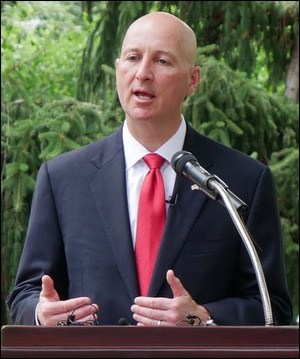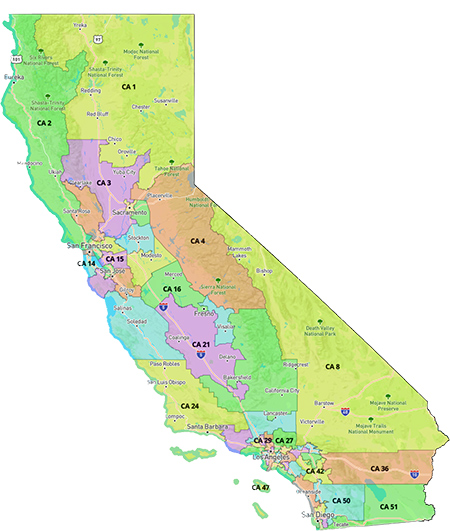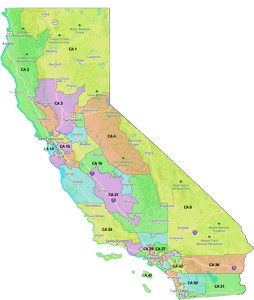By Jim Ellis — Tuesday, Oct. 11, 2022
Senate
Nebraska: Gov. Ricketts Makes Succession Statement — Sen. Ben Sasse’s (R) resignation, to occur once he is confirmed as the University of Florida’s new president, has spurred discussion as to who will be appointed as Nebraska’s replacement junior senator. Term-limited Gov. Pete Ricketts (R), who refused to comment about his interest in assuming the position when Sen. Sasse announced his future plans, uttered a clarifying comment over the weekend.Under Nebraska state law, a governor has 45 days to replace a resigning senator after the seat becomes officially vacant. Sen. Sasse indicated he will resign before the end of the year. Therefore, it is possible that Gov. Ricketts could make the appointment as one of his last official acts, or the likely incoming chief executive, University of Nebraska Regent Jim Pillen (R), would do so as one of his first duties.
Ricketts now indicates if he develops an interest in receiving the appointment, he will let the new governor choose the new senator and not appoint himself. In a crowded 2022 Republican gubernatorial primary, Gov. Ricketts endorsement of Pillen helped him win the nomination, so the early tea leaves are suggesting that the outgoing governor could be headed to the Senate.
New Hampshire: Dollars Changing Direction — Earlier, we speculated upon the National Republican Senatorial Committee eventually making the move to pull their media reservation dollars from New Hampshire and begin moving the money to places where the GOP candidate looks to be in better victory position — namely Nevada, Arizona, Georgia, and Pennsylvania. With the NRSC’s canceling its $2.6 million budget for the Boston market, as reported by the Adminpact and Daily Kos Elections organizations, the move has been made.
This, however, does not mean the Republican sector is abandoning New Hampshire, especially since polling still shows nominee Don Bolduc within high single-digits of Sen. Maggie Hassan (D). The Senate Leadership Fund and other outside right-of-center allies have reserved another $23 million in media time, so they are clearly not giving up on the NH Senate race even though the state and national party leadership overtly attempted to deny Bolduc his nomination.
House
CA-21: Rep. Costa in Dead Heat — The Trafalgar Group released the first post-primary survey of California’s new 21st Congressional District and the results reveal a surprising dead heat between Rep. Jim Costa (D-Fresno) and businessman and former FBI agent Michael Maher (R). The poll (Sept. 30/Oct. 3; 515 likely CA-21 general election voters; multiple sampling techniques) finds the two candidates tied at 44 percent.
While the Central Valley region is showing signs of voting more conservatively than the rest of the Golden State electorate, the Republicans taking this district would be quite a stretch. The FiveThirtyEight data organization rates the new 21st, which includes downtown Fresno, as D+16 while the Dave’s Redistricting App crew calculates a 58.2D – 39.7R partisan lean. In the jungle primary, Rep. Costa unexpectedly received just 47.0 percent of the vote, but the Democratic aggregate total was 57.0 percent.
FL-27: Tight Race Prediction Coming True — In 2020, Rep. Maria Elvira Salazar (R-Miami) upset then-Rep. Donna Shalala (D) from a South Florida district that votes Republican to a greater degree than the voter registration figures might suggest. The GOP redistricting map drawers made the seat more favorable for Rep. Salazar, but it still rates as a D+1 according to the FiveThirtyEight data organization and 52.4D – 46.5R on the Dave’s Redistricting App partisan scale.
Therefore, it is not surprising to see a SEA Polling & Strategic Design survey (Oct. 3-5; 400 likely FL-27 general election voters; live interview) finding state Sen. Annette Taddeo (D-Miami) and Rep. Salazar in a virtual dead heat (Taddeo, 47-46 percent). The poll also found Gov. Ron DeSantis (R) leading former governor and congressman, Charlie Crist (D), 50-44 percent within the 27th District, while Sen. Marco Rubio (R) held a 48-47 percent edge over Rep. Val Demings (D-Orlando).
Governor
Oklahoma: Shock Poll — Largely due to fallout from his Administration’s handling of some of the Covid 19 relief expenditures and attacks over his former business dealings, polling has suggested weakness for Gov. Kevin Stitt’s (R) re-election bid. Now we see a new survey that, for the first time, projects the governor falling behind his Democratic opponent, Superintendent of Public Instruction Joy Hofmeister (D).
The Sooner Poll, which surveys the Oklahoma electorate for various media outlets, released their new data (Oct. 3-6; 301 likely Oklahoma general election voters) and sees Hofmeister holding a surprising 47-44 percent lead. Though the Sooner Poll contains a very small sample and therefore a high error factor, it is becoming clear that this race will now draw further national attention.


 Feb. 23, 2021 — The Daily Kos Elections website staff have just completed the calculations they perform after every presidential election: that is, determining how all 435 congressional district electorates voted for president, and then cross-referencing that result with their US House vote.
Feb. 23, 2021 — The Daily Kos Elections website staff have just completed the calculations they perform after every presidential election: that is, determining how all 435 congressional district electorates voted for president, and then cross-referencing that result with their US House vote.

 Dec. 3, 2019 — Now that two states have already completed their congressional candidate filing (Alabama and Arkansas) and five more are scheduled for December including Illinois, which closed yesterday, it is time to begin to ascertain where US House politics might reasonably stand right now.
Dec. 3, 2019 — Now that two states have already completed their congressional candidate filing (Alabama and Arkansas) and five more are scheduled for December including Illinois, which closed yesterday, it is time to begin to ascertain where US House politics might reasonably stand right now. 